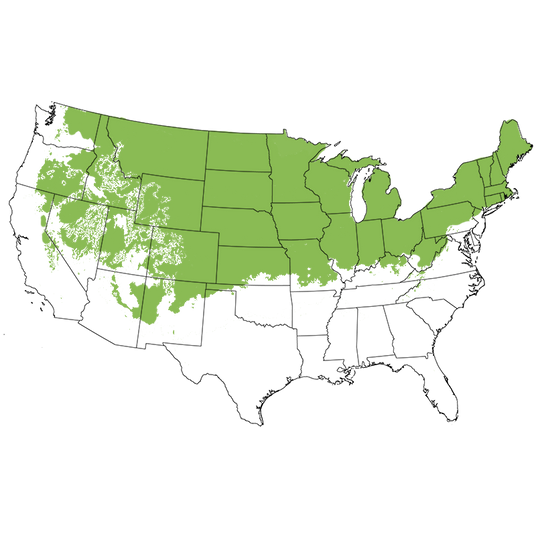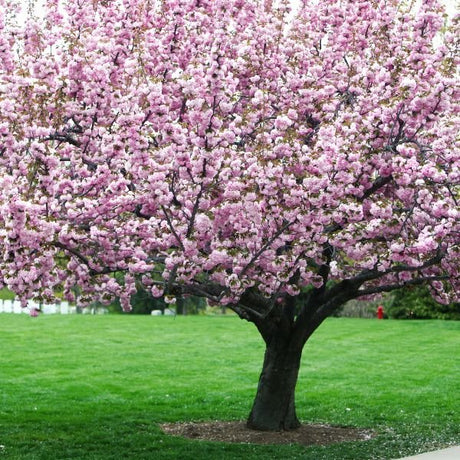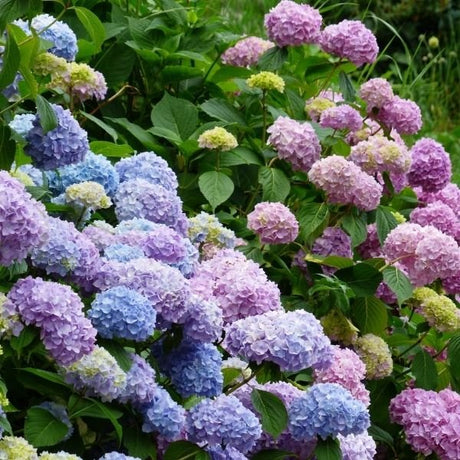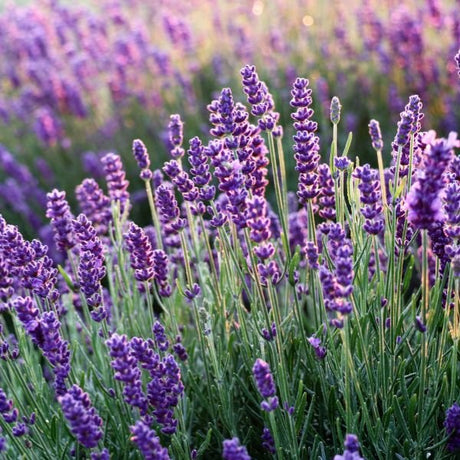State Fair Apple Tree
- Stay Protected with Plant Sentry ™
State Fair Apple Tree - 4-5 Feet Bareroot Standard Height is backordered and will ship as soon as it is back in stock.
To receive an email notification when our next crop is ready, please enter your email below..*
Plant Sentry™
Plant Sentry™
Plant Sentry is designed to protect both consumers and the nursery trade from invasive plant pests and diseases. Sites that display the Plant Sentry protection badge are protected from consumers buying and nurseries shipping material carrying invasive pests and diseases.
This proprietary eCommerce software prevents the shipment of a restricted plant to each state. The Plant Sentry system includes a shipment certification program. The Plant Sentry Compliance Officer works closely with NatureHills.com and each nursery or fulfillment center to ensure only compliant plants are sold to customers.
Click Here to learn more

Delivery and Shipping
Delivery and Shipping
Shipping
To obtain a more accurate shipment time-frame, simply enter your zip code in the “Find Your Growing Zone” box to the right. Our plants are grown all over the country and lead time on items may be different because of this. Once your order is placed, you will also receive the specific shipment time-frame information as part of your order confirmation. Once an item ships, you will receive shipment notification and tracking numbers, so you can follow along while your plant travels to your doorstep. We use FedEx, UPS, or USPS at our discretion.
Due to winter weather we have put a hold on shipping to the areas shown below in grey. You can still order now and we will ship the plant to you during an appropriate time for your zone.
Standard Shipping Rates
At Nature Hills we handle, package and ship the products you order with the utmost care to ensure healthy delivery. Shipping and handling charges are calculated based on the tables below. Please note that some items include an additional handling surcharge, these will be noted on the item's product page.
| From | To | S&H |
|---|---|---|
| $0 | $19.99 | $24.99 |
| $20 | $49.99 | $29.99 |
| $50 | $69.99 | $34.99 |
| $70 | $99.99 | $39.99 |
| $100 | $129.99 | $44.99 |
| $130 | $149.99 | $48.99 |
| $150 | $150+ | Approx 28% |
Click here to see our full rates
Buying Options for Plants
Nature Hills sells a large variety of plants with several options available. Plants are offered in both potted containers and as dormant bare root without soil. Here is a helpful resource to understand your options as you create a beautiful landscape with help from Nature Hills.
Ever wonder what a larger plant will mean for your landscape? Container Sizes are really all about the age of the plant!
Seasonally, Nature Hills offers hand selected, high quality bare root trees, shrubs and perennials. Bare root plants are sold by height from the top of the root system to the top of the plant. Plants may be taller than the height minimums.
- Popular sizes of select trees are 1 foot, 2 feet, 3 feet, etc.
- Popular sizes of select bare root plants is 1 foot, 18 inches, etc.
Nature Hills Container Size by Volume
Keep in mind, specific varieties and different growing conditions can affect the rate at which plants grow. Variations in size may occur.
| Young Plants to 18 Months | ||
|---|---|---|
| Size | Volume | |
| 2"x2"x3" | Ranges from | .18 to .21 dry quarts / .198 to .23 dry liters in volume |
| 4.5" Container | Equal to | .65 dry quart / .72 dry liter in volume |
| Sprinter Pot | Equal to | .63 dry quart / .69 dry liter in volume |
| 4" Container | Ranges from | .31 to .87 / .35 to .96 dry liter in volume |
| 6" Container | Equal to | 1.4 dry quarts / 1.59 dry liters in volume |
| 1 Quart | Equal to | 1 dry quart / 1.1 dry liter in volume |
| 5.5" Container | Equal to | 1.89 of a dry quart / 2.08 dry liters in volume |
| 4"x4"x5" | Ranges from | .8 to 1.1 dry quarts / .88 to 1.2 dry liters in volume |
| 4"x4"x6" | Ranges from | 1.0 to 1.3 dry quarts / 1.1 to 1.41 dry liters in volume |
| 4"x4"x9" | Ranges from | 1.1 to 2.1 dry quarts / 1.2 to 2.3 dry liters in volume |
| 4"x4"x10" | Ranges from | 1.7 to 2.3 dry quart / 1.87 to 2.53 dry liters in volume |
| Plants 18 Months - 2.5 Years Old | ||
|---|---|---|
| Size | Volume | |
| 2 Quart | Equal to | 2 dry quarts / 2.2 dry liters in volume |
| #1 Container | Ranges from | 2.26 to 3.73 dry quarts / 2.49 to 4.11 dry liters in volume |
| 5"x5"x12" | Equal to | 3.5 to 4.3 dry quarts / 3.85 to 4.74 dry liters in volume |
| Plants 2 - 4 Years Old | ||
|---|---|---|
| Size | Volume | |
| #2 Container | Ranges from | 1.19 to 1.76 dry gallons / 5.24 to 7.75 dry liters in volume |
| #3 Container | Ranges from | 2.32 to 2.76 dry gallons / 10.22 to 12.16 dry liters in volume |
| Plants 3 - 5 Years Old | ||
|---|---|---|
| Size | Volume | |
| #5 Container | Ranges from | 2.92 to 4.62 dry gallons / 12.86 to 20.35 dry liters in volume |
| #6 Container | Ranges from | 5.25 to 6.01 dry gallons / 23.12 to 26.42 dry liters in volume |
| #7 Container | Ranges from | 5.98 to 6.08 dry gallons / 26.34 to 26.78 dry liters in volume |
Plant Highlights
State Fair Apple Tree highlights at a glance!
Plant Highlights
Plant Highlights
-
Brand
-
Botanical Name
-
Growing Zones
-
Mature Height
-
Mature Spread
-
Sun ExposureFull Sun
-
Moisture
-
Soil
-
Growth RateMedium
-
Flower Color
-
Fall Color
-
Pollinator Friendly
-
Pollinator Required
-
Fragrant
-
Pruning Time
-
Bloom PeriodEarly Spring, Late Spring
-
Harvest Time
-
Photos Provided ByUniversity of Minnesota, David L. Hansen

Growing Zones 3-6
Blue Ribbon Color & Taste: The State Fair Apple Tree!
- Beautiful Bright Red-Striped Fruit
- Mid-Sized Apples With Good Texture
- Creamy White-Yellow Flesh is Aromatic
- Semi-Sweet, Slightly Tart & Very Juicy
- Fragrant Pink Blooms
- Pollinators Galore
- Shiny Red Smooth Skin
- Long-Lived!
- Will Require a Pollinator Partner
- 800-1,000 Chill Hours
- Very Cold Hardy!
- Multi-Use Apple - Juice, Good Fresh Eating & Baking!
The State Fair Apple Tree (Malus x 'State Fair') is a go-to choice for home growers with an eye for beauty and a palate for balanced apples.
While State Fair’s fruit is excellent, many gardeners celebrate this tree's floriferous blooming season! Exploding with large clusters of white-to-rose pink blooms that smell as great as they look!
Pollinators celebrate the nectar resource and so will you! Schedule some time to watch the bees float from bloom to bloom as you dream of the approaching apple season. A picnic beneath the flower-laden branches will show you why there are apple blossom festivals!
As these brilliant apples ripen on the branch, you will enjoy that blush and stripes of coloration from yellow to green to shiny red with precious freckles.
The State Fair Apple Tree is a smaller size that produces medium-sized apples that are juicy, sweet yet tart, and good for eating fresh, but also baking, sauces, pies, and canning.
These lovely globes of goodness have a month’s storage life and are the perfect snack to pack in kids' lunches since they ripen from September to October.
These are good fruit trees with early apples for northern orchards. Reaching 25 feet tall and 15 feet wide, these deciduous trees are vigorous growers!
How to Use Haralson Apple Tree In The Landscape
These all-purpose apples happily fit into any culinary niche. Slightly acidic, so they do well in pies and as an amazing ice cream topping. State Fair is also a great choice for salads, ciders, and apple juice.
You don't have to worry about urban conditions, this tree doesn't mind a city setting.
Good sized for edible landscaping, not to mention beautiful enough to be specimen plantings and focal points, State Fair is dual purpose!
#ProPlantTips For Care
This cold-hardy tree loves full sun and requires a buddy for full pollination. You can choose from a white-blossoming Crabapple or another Apple Tree (see below) to increase pollination and harvest. You can even put them both in the same hole to conserve garden space.
Get your new State Fair Apple established with careful watering during the first season. All trees benefit from having a nice 3-inch layer of arborist wood chips over the root zone to buffer the temperatures and maintain even moisture. Never plant too deep, and always keep the mulch a few inches away from the trunk.
Not particular on soil type, any well-drained fertile, and organically enriched soil works great.
Prune to open the canopy and let sunlight and air circulation move through the branches.
Looking for an apple that is attractive and will win you a blue ribbon at the fair? Want to bake an award-winning pie? Order your State Fair Apple Tree from Nature Hills today!
State Fair Apple Tree Frequently Asked Questions
When to Plant State Fair Apple Trees
Planting Bareroot trees as soon as you can dig a hole in spring and until hot weather, the earlier the better. Plant container Apple trees throughout the growing season with complete success - that is the benefit of container plants - to extend the planting season. Your County Agricultural Extension Office is a great resource for first and last frost dates in your area.
How to Plant State Fair Apple Trees
Dig a large hole only as deep as needed to accommodate the bareroot or container root ball, and twice as wide. Add Nature Hills Root Booster to speed root establishment. Remove the pot or bag and situate it into the hole so the top of the soil (soil line if bareroot), is level with the new location's soil being careful not to plant too deep. Water in again very well and backfill with the same soil you dug up, tamping down gently to ensure there are no air pockets.
Top off with a 3-4 inch thick layer of Arborist mulch. Consider staking your tree to keep its trunk growing straight for the first year to ensure it stands tall against strong winds and drifting snow.
When to Prune State Fair Apple Trees
Trim off any broken branches from delivery as soon as you take them out of the box. Prune and trim apple trees while dormant, in late winter or early spring, before you see new growth.
How to Prune State Fair Apple Trees
Dormant prune to:
- Remove any double leaders or narrow crotch angles
- Eliminate any crossing branches
- Thin interior branching and leave the fruiting spurs and strong branches in place opening up the canopy
- Branching at least 24-36 inches above the ground
Prune Apple trees in the summer to:
- Control size and shape by reducing the length of longer new growth on vigorous trees
- Remove water sprouts on the main trunk or older branches in the crown
- Remove suckers at the base of the trunk
- Thin fruit during heavy years on established trees
How to Care for State Fair Apple Trees
Growing an apple tree is easy when proper soil, good drainage, attention to moisture, and regular fertility are maintained. Once you've chosen an apple tree that works for your climate, in the size you need for your landscape, and its pollinator (if needed), then you've accomplished half the battle!
- Apple trees do best in full sun and well-drained soil
- Water your apple trees when they get dry - especially during the fruit production stage, and drought periods to keep them stress-free
- Use arborists' wood chips to mulch over the roots of your apples and have your soil tested to see what your soil may be lacking before adding fertilizers
- Maintenance pruning and shaping
Apple trees will tolerate a wide range of soils, so long as water and nutrients are not limited and the pH level is adequate.
How to Fertilize State Fair Apple Trees
For the first year, water alone is most important. It is always best to get a soil test to see what your soil is lacking before adding more fertilizers. Once established, a fertilizer routine may be beneficial. We do offer some excellent slow-release organic options, applied according to the package directions.
Fruit trees need more phosphate and it's possible to apply too much nitrogen which affects the soil's pH. Test soil acidity or alkalinity using a pH Tester.
Fertilize in spring when you first see new growth emerging.
- Don't overdo it
- Phosphates are your friends
- Pay attention to pH in areas with extremely high or low soil pH
- Follow the directions
State Fair Apple Tree Pollinating Info
State Fair is not self-fruiting and needs a pollinating partner. Pair with one of these varieties:
- White Flowering Crabapples - Centennial, Chestnut, or Dolgo
- Cortland
- Cox's Orange Pippin,
- CrimsonCrisp
- Cripps Red and Pink
- Empire
- Freedom
- Frostbite
- Fuji
- Gala
- Granny Smith
- Honeycrisp
- Jonathan
- Macoun
- Pixie Crunch
- Red Delicious
- SnowSweet
- SunCrisp
- Sweet Sixteen
- Wealthy
- WineCrisp
- Wolf River
Harvest Times for State Fair Apple Trees
State Fair Apples are typically ready to harvest in August.
Early-Season? Mid-Season? Late-Season? The terminology can be confusing for new apple tree growers. Weather, climate and your tree determine when it's ripe.
For Apples:
- Early-season is usually June-July
- Mid-season can be August-September
- Late-season can be from late September-November
The growing season consists of spring, summer, and fall, and varies with climate and weather. Areas with longer growing seasons in the warmer hardiness zones can greatly affect the harvest times for each particular apple variety grown in your area. Learn which growing zone you are in.
What Shipping Options Do You Offer?
NatureHills.com works closely with our growers and nursery professionals to ensure we ship when it is most appropriate for your area. Our goal is to deliver the hardiest plants by avoiding extreme high and low temperatures. Check out our shipping schedule for more information and to learn our wills and won'ts when it comes to shipping plants. Find your State Fair Apple Tree for sale here at NatureHills.com!
Rootstocks Explained
Apple trees have been grafted onto different rootstocks since before the mid-1800s. Different rootstocks are used to improve the anchoring of trees, eliminate diseases, and reduce the natural mature size of the tree itself. While there are many different types of rootstock, they are all labeled as being either Dwarf, Semi-Dwarf, or Standard.
The apple descriptions, including flowering, pollination, and apple characteristics are the same whether the plant is grown on a standard rootstock or some varying dwarfing rootstock. The overall size can vary by climate and soil but the understock used is ultimately what affects the mature size.
There will be some variation in sizes but as a guide, we are suggesting the overall mature size of these apple varieties are:
Semi-Dwarf Apples
- Height: 12-18 feet
- Spread: 10 - 15 feet
Standard Apples
- Height 18 - 25 feet
- Spread: 15 - 18 feet
Remember that all fruit tree sizes can easily be altered if needed by simple pruning as the trees grow and develop.







